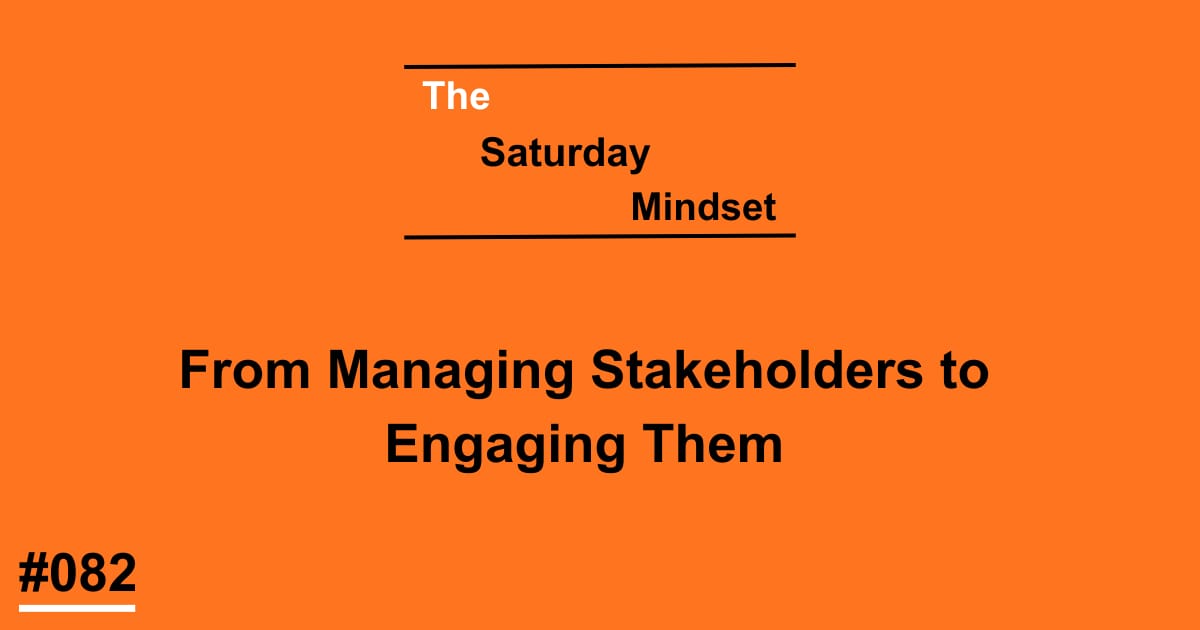- The Saturday Mindset
- Posts
- From Managing Stakeholders to Engaging Them
From Managing Stakeholders to Engaging Them
Read time - 3 minutes

For a long time, project managers saw stakeholders as something to manage—people to keep informed, aligned, and, hopefully, satisfied.
But the truth is, stakeholders aren’t just there to receive updates. They’re partners in shaping outcomes.
When we move from control to collaboration, and from direction to dialogue, projects start to flow more smoothly—and people start to feel genuinely invested in the result.
Table of Contents
A Real-World Reminder
Recently, while planning a power shutdown and coordinating with several departments and contractors, I saw how fragile trust can be when people feel left out of the loop.
Once the electrical contractor (our main contractor) sent the updated schedule, I was finally able to communicate clearly with everyone—showing which areas would be affected and for how long. That single step changed everything.
People felt prepared instead of caught off guard. They could plan around the disruption and adjust their work accordingly. It wasn’t the plan that made the difference, but the fact that people felt involved.
What PMI Says
“Identifying, analyzing, and proactively engaging with stakeholders from the start to the end of the project helps to enable success.
Engagement includes building and maintaining solid relationships through frequent, two-way communication. It encourages collaboration through interactive meetings, face-to-face meetings, informal dialogue, and knowledge-sharing activities.”
— PMI, PMBOK® Guide – Seventh Edition (2021), The Standard for Project Management, Section 3, p. 33.
PMI’s Seventh Edition shifts the focus toward the Stakeholders Performance Domain, where success depends on ongoing conversations, mutual trust, and shared ownership of the project’s goals.
Why the Shift Matters
When we move from managing to engaging, people start to feel ownership. They bring ideas, not resistance. They use “we” instead of “you.”
Engagement isn’t about adding meetings—it’s about creating genuine two-way conversations that make people feel heard. That’s what drives collaboration and builds commitment when challenges arise.
Action Step
List your top five project stakeholders. Next to each name, write one thing they value most—safety, schedule, budget, reliability, or simplicity.
Then ask yourself: Am I engaging this person—or just managing them?
Projects don’t succeed because of perfect plans or polished drawings. They succeed because people feel part of something that matters.
P.S. Want more practical insights from real projects? Check out vandersonbaril.com for simple, field-tested strategies in engineering and project management.
See you next Saturday!